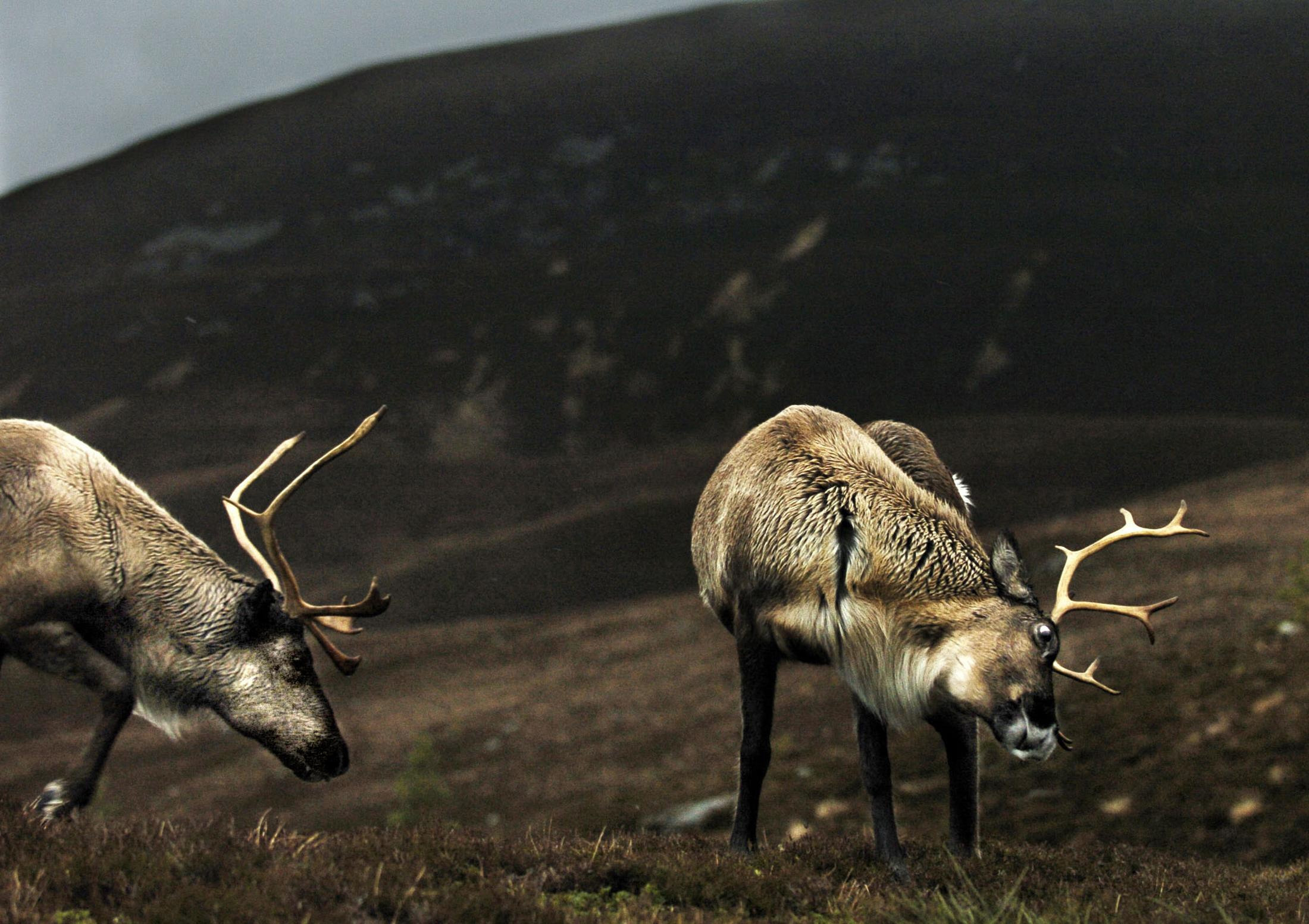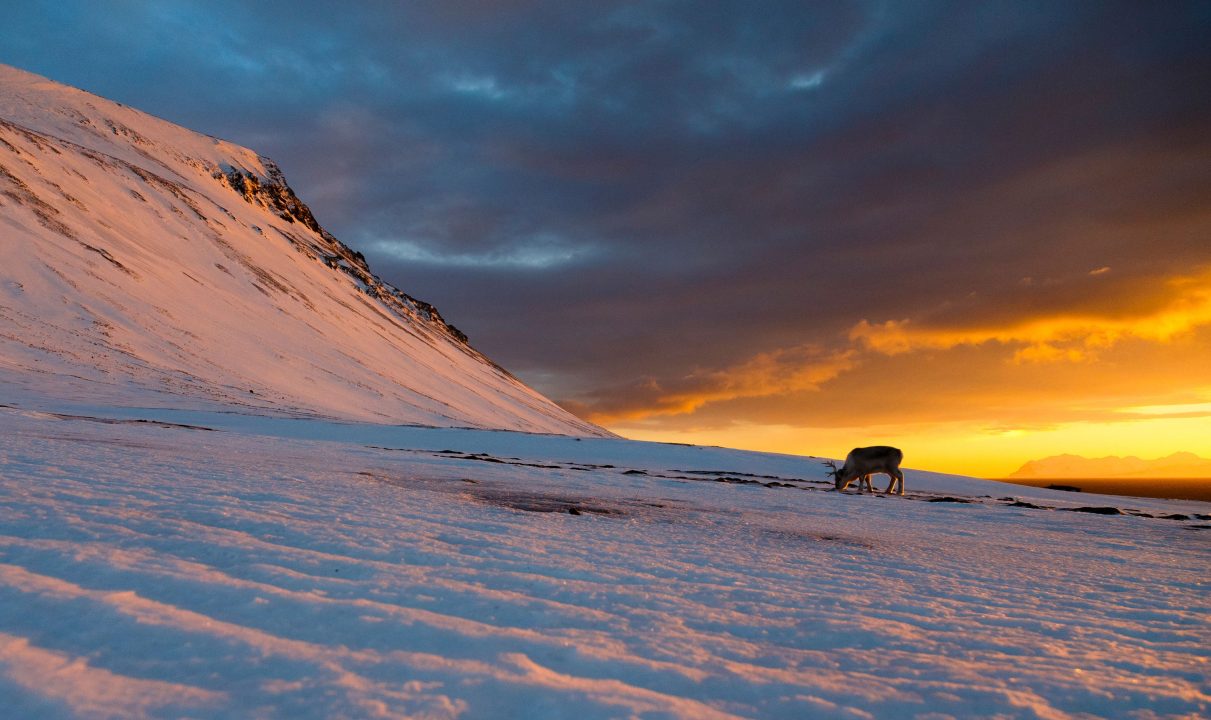Reindeer use a special form of night vision to detect food sources, a new study has revealed.
Researchers from the University of St Andrews teamed up with Dartmouth College, New Hampshire, US, in order to conduct a study to find out why reindeers’ eyes change colour depending on the season.
The surface of a reindeer’s eyes (the tapetum) changes from golden-orange in summer to a rich blue hue in the winter months. They are the only animals known to do this.
The study, Reindeer and the quest for Scottish enlichtment, found that while the colour shift in the species’ eyes may help them see better in the peak of winter when snowfall is heavy, it also allows their eyes to transmit ultraviolet light.
Researchers said this begs further questioning as the sun’s UV rays reflecting off of the snow results in the species taking in twice as much UV light because of their advanced eyesight.
 PA Media
PA MediaThey also said this is the reason why the deer are able to see clearly in the dark and scour for food items like lichen.
The research was led by Professor Nathaniel Dominy and Charles Hansen, a professor of anthropology at Dartmouth College, and Dr Catherine Hobaiter and Professor Julie Harris of the University of St Andrews’ School of Psychology and Neuroscience.
Professor Dominy said: “Reindeer are so cool, but many people think about them only at Christmas.
“Now is a good time to alert people to their extraordinary visual system.”
Reindeer are known to feed on a particular species of lichen named Cladonia rangiferina, often colloquially referred to as “reindeer moss”.
The lichen species is in fact not moss, and grows in sponge-like beds across the northern latitudes where reindeer live. It is vital for their survival during winter.
 PA Media
PA MediaDr Hobaiter said it had previously been suggested that reindeer’s night vision may be an adaptation to forage for the lichen, but previous tests did not find substantial evidence.
However, she said there are over 13,000 species of lichen worldwide and to date, no-one has tested the species the reindeer feed on.
She said: “One of the amazing things about Scotland is that we have some of the richest lichen diversity in the world – the Highlands host over 1500 different species, and the Cairngorms are home to a local herd of reindeer, reintroduced to Scotland after being hunted to extinction. So, Scotland is the perfect place to try and finally solve the mystery.”
The team began researching in early March this year in the Cairngorms in search of lichen beds.
The team photographed various lichen beds under UV light, finding different species absorbed or reflected the light differently, and that “reindeer moss” absorbed the light strongly.
Dr Hobaiter said: “To our eyes, just like for most mammals, pale lichen in white snow is incredibly hard to spot!
“But to reindeer eyes, the species they need to feed on would stand out as dark patches in the much more reflective snowy landscape.”
Professor Dominy added: “If you can put yourself in their hooves looking at this white landscape, you would want a direct route to your food. Reindeer don’t want to waste energy wandering around searching for food in a cold, barren environment.
“If they can see lichens from a distance, that gives them a big advantage, letting them conserve precious calories at a time when food is scarce.”
Follow STV News on WhatsApp
Scan the QR code on your mobile device for all the latest news from around the country


 PA Media
PA Media




















